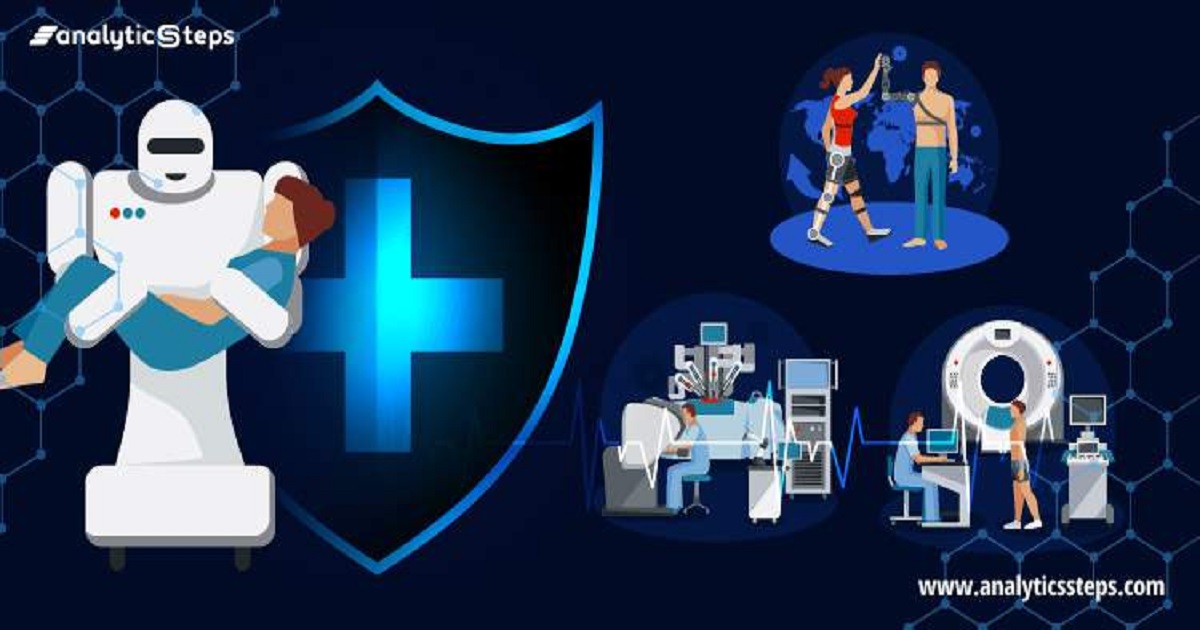
Health Technology, Digital Healthcare
Article | August 16, 2023
Contents
1. Knowing The Basics
2. Importance Of EHR In A Rural Setting
3. Features That An EHR Must Have In A Rural Area
Today, we will discuss the crucial featuresof electronic health records (EHR) in rural hospitals. However, before listing out the key components, let us first understand what EHR is and how it can help the smooth functioning of medical treatment in a rural setup.
1. Knowing the Basics!
As the name suggests, an electronic health record is a computer file that stores a patient’s medical history, such as diagnosis, treatment, test results, etc. In short, an EHR is a digital version of a patient’s paper health record. It also includes previous appointments, billing details, and other general documentation. The need for an EHR popped up due to its easy and secure availability compared to patients' paper files. In addition, patients and doctors can easily access lab reports through an EHR that is updated in real-time and downloaded on any device with an internet connection.
2. Importance of EHR in a Rural Setting!
Healthcare Information and Management Systems Society (HIMSS) defines EHR usability as “The effectiveness, efficiency, and satisfaction with which specific users can achieve a specific set of tasks in a particular environment.' In essence, a system with good usability is easy to use and effective. It is intuitive, forgiving of mistakes, and allows one to perform necessary tasks quickly, efficiently, and with a minimum of mental effort.”
A patient's electronic health records can be beneficial in an era of digitization. It can improve patient care by minimizing the chances of medical errors, reducing test duplication, and making doctors and patients well-informed by fetching medical records anytime, thereby reducing delays in treatment.
3. Features That an EHR Must Have in a Rural Area
EHRs can prove beneficial in all areas situated far off by accessing the real-time, up-to-date data of patients’ health records and making timely decisions. When the distance between the clinics and specialists is more, an EHR report can easily be sent to look into a patient’s history before delivering treatment.
In a rural setup, EHR helps promote health awareness as patients' data can be monitored without needing to be physically present. Software-as-a-Service (SaaS) Solutions can be easily deployed in places with slow internet and help maintain a lightweight EHR that can support immediate patient care and easy documentation.
Next comes the option of configuration over coding. At the Rural Health Clinic (RHC), an EHR that the local IT team can handle would be of more use than one that may require a specialist’s check or additional coding. An EHR, equipped with the ability to configure and customize as per the clinic’s workflow, will give more control to the RHCs and enable them to function efficiently.
Another significant point of an EHR in a Rural Health Clinic will be the inclusion of applications that support instant communication, like Telehealth and patient portals. These applications enable direct consultation and virtual care of patients and specialists located far off, thereby reducing the dependency of RHCs on city or urban-based facilities.
When we are discussing rural hospitals, we need to look for an application that is both affordable and functional, as rural areas mostly struggle with problems regarding budget and resources. Hence, keeping this in mind, RHCs should install a cloud-based EHR that does not require buying servers or employing IT staff.
RHCs must use an EHR application with innovative analytic tools to access and develop reports for quick patient care decisions. In addition, the system must be able to pull large chunks of data and generate reports daily.
Enjoyed reading this? Want to read more related articles? Click the link for more information!
https://healthcare.report/trending-news/electronic-health-records-ehr-software-market-2019-foreseen-to-grow-exponentially-by-2026
Happy Reading!
Read More

Healthtech Security
Article | November 29, 2023
The fall is a time of renewals and choices. It is also a time of so called “open enrolment” for health plans. It is the one time of year we can study and learn about the options offered through employers or government sponsored plans. Individuals and small business owners alike are also are faced with a myriad of choices with confusing and often contradictory language promising lower premiums with higher out of pocket costs for covered services subject to deductibles. What does it even mean anymore when your monthly premiums exceed your pay check and you still have to pay for your colonoscopy or your insulin? Where is it all going?
Let’s imagine you twist your ankle playing basketball. You might go to an urgent care, receive an X-ray, probably be examined by a non-physician, and then referred to your primary care, who can’t see you for a few weeks but eventually sends you to an orthopaedic who takes another X-ray and treats your injury. Weeks have passed, multiple visits, time out of work, and co-pays, not to mention the out-of-pocket fees associated with imaging and perhaps a $100 ace bandage. What stops you from going straight to the ankle specialist in the first place? First, we have become conditioned to follow the directions dictated by the insurance companies, even when restrictions are not in place, patients have been convinced that stepping out of line will make all insurance promises null and void resulting in catastrophic bills and financial ruin. Second, the doctors and their office staffs have been conditioned to deny entry to any patient who does not have the proper referral, authorization, or identification. There are dire consequences for both if the insurance rules are not followed and fear keeps both sides aligned.
The past two decades have seen an explosion of healthcare costs. Health insurance has become the single biggest line item second only to payroll for most businesses. It is no coincidence that as the government increased its role as payor with state subsidies, the prices have gone up. Much like college tuitions, when loans are easy to obtain and guaranteed by federal support, there is little to deter those in charge from increasing the price. After all, everyone is doing it, it must be OK, and even if students end up in debt, it will be repaid because they have received the value of a great education. Right? But unlike higher education, healthcare is a necessity. We cannot avoid it, and there needs to be a reliable mechanism in place to guarantee access.
Ironically, as charges and prices have continued to escalate, payments to doctors have diminished. Why medicine is the only service industry where there is no transparency is truly astounding, especially since the there has been no increase in so called “reimbursements” for decades. As physicians, we have been complicit, being fully aware of the discrepancies between what is charged and what a patient’s insurance will pay. Even as patients began to have higher deductibles, and therefore higher out of pocket expenses, we continued to follow the rules, asking insurance permission to collect payment from the patient. It is not surprising that bad debt accounts for over 50% of most account receivables and why over 70% of doctors are now employed by hospital networks or private equity, who not only go after patients, but benefit from the repricing that occurs when insurers pay a negotiated amount as opposed to the charge. In other words, we pay more not just for less, but for nothing.
But what if we twisted our ankle and went directly to that specialist and paid out of pocket a transparent price? What would it take for that to happen? Not much, the cost of care is predictable, and because payments have always been decreasing, most physicians have learned to be economical. Plus, out of pocket costs are capped by federal law, so no patient is really responsible for catastrophic bills. Charges inflate to cover overhead, but if payments were guaranteed and immediate, then the cost of doing business goes down. Add technologies like telemedicine to a practice and you have increased patient access to a doctor without adding more personnel. Direct pay doctors are emerging all over the country and have consistently offered better access and more affordable care. The bar is also being set by independent surgery centers and imaging centers who offer better outcomes at lower costs. Perhaps motivated by prohibitive pricing, better options have emerged that have moved patients away from expensive operating rooms to safe, office-based procedures. Even cutting-edge cancer therapies can be delivered at home, preserving more of the healthcare dollar for medical care rather than the complex system built to manage it.
Competition and choice inevitably drive prices, but in a monolithic system the price is not negotiated, but instead it is set by only a few, in this case the big insurers. Small businesses cannot compete when bigger companies come to town. Eventually, the local hardware store gives way to a national brand, and the consumer is left with fewer choices and eventually higher prices. Amazon disrupted this equation by creating a marketplace for individual buyers and sellers. The convenience of finding a trusted brand, no longer available locally, is irresistible and the reason why we became loyal consumers. Healthcare is no different. Trust exists implicitly between a physician and patient, because it is an authentic, empathetic, and logical relationship. Trust does not exist between a patient and their insurer, on the contrary it is an unsympathetic business relationship without transparency or consistency. Few doubt the insurance company’s top priority is the premium, not the patient. Creating a direct relationship between the doctor and patient is a common-sense approach that serves both stakeholders well, and requires merely a fair and affordable price. But do doctors have the capability or the will to do it and if so, can the rest of the system follow?
Never in the history of modern medicine have physicians been more dissatisfied. US healthcare used to lead the world in innovation and outcomes, now we struggle to break the top thirty. We may have the most brilliant doctors and scientists with access to the best resources, but the need to maximize profits while catering to special interests, be they commercial or political, has led us to favour certain therapies over others despite marginal proven benefits. Doctors have little autonomy and less authority; prescribed treatments are routinely denied by insurance companies without a second thought or appropriate peer review. In fact, insurers even renamed us “providers”, a term used to by Nazis when referring to Jewish doctors to devalue them professionally. Over 56% of physicians are burned out, nearly all report moral injury and as hospitals have systematically replaced doctors with non-physicians with limited training, we have watched the standard of care deteriorate. It is no wonder we have witnessed the single biggest loss in life expectancy since WWII. The prognosis is grim, but there are solutions.
We need to reinvent healthcare by removing the middleman. We don’t have to set the price, but we can make it transparent so patients can decide for themselves if it is worth the inconvenience, the delay, and the co-pay to use insurance or just pay directly. Health savings accounts are tax deferred and can cover an out-of-pocket maximum in just a couple of years. Paying for care means there are no surprise bills or out of network costs, because there are essentially no networks and therefore no need to follow restrictions. You’d be hard pressed to find a doctor or hospital unwilling to accept an immediate cash payment, especially when it costs nothing more than the service provided. There are no billing cycles, or claims to prepare, no up coding, or authorizations. Doctors free to care for patients, patients treated individually and not subject to protocols designed to maximize charges. There are literally thousands of direct pay primary care and specialists now available all over the country and they are building alliances with likeminded people providing imaging, ancillary services, surgery centers, and prescriptions all at fair market prices. More and more employers are moving toward medical cost sharing plans that not only lower the cost of care but the cost of administration. Even the biggest payor, namely the government, sees the benefit of price transparency and is piloting models of direct contracting.
We will always need coverage for those unexpected events, emergencies, or hospital-based services, but all the rest - doctor visits, screening tests, and outpatient procedures - are easily affordable. After all, do we use our car insurance to pay for an oil change? If we did, the cost would be prohibitive and few of us would drive. But health insurers have lost our trust, they no longer cover necessary services and no longer honour contracts with physicians or patients. It is time to offer another option and let the patients and doctors get back to the real business of medicine.
Read More

Digital Healthcare
Article | November 29, 2023
In 2021, the introduction of Amazon Care marked the first time a prominent technology firm stepped into the healthcare services industry. The fact that Amazon filed paperwork to offer care in multiple states without much fanfare is intriguing. In March 2021, the company confirmed the details of its new services, announcing that it would be delivering the services through an independent private medical practice called Care Medical.
The move may signify another diversification for Amazon, but what does it mean for the healthcare services landscape?
The Highlights of Amazon Care’s Services
Home healthcare
Amazon announced that it would be participating in an advocacy group for home healthcare. The Moving Health at Home initiative aims to transform how policymakers view the home as a site to deliver clinical services. Amazon Care may be riding on the trend for home care that has been evolving in the form of remote patient monitoring for post-acute care management and chronic care.
Employer-oriented offering
Amazon Care aims to become a workplace benefit partner for employers. One of the pain points it is directly addressing is the challenge of runaway inflation that increases healthcare costs.
Virtual care simplified
The most significant offering that Amazon Care plans to lead with is virtual care that promises to reduce wait times for quality patient care to under 60 seconds. It also includes the option to access 24-hour care services through messaging and video calling. In addition, it eliminates unnecessary traveling and long wait times by delivering care in the comfort of the patient’s home.
The Path Ahead
Amazon is known for introducing a slew of initiatives in the health and fitness sector, like the Halo wearables, a data management product called Amazon Health Lake, and a healthcare delivery system called Haven, which doubled over in 2021 after a three-year run. However, the tech juggernaut is not about to stop attempting to disrupt healthcare services. Only time will tell whether Amazon Care finally proves to be a feather in Amazon’s healthcare cap or another ambitious project that bites the dust.
Read More

Article | April 22, 2020
Remember Big Hero 6's beloved Baymax? The lead character’s personal pudgy robotic healthcare companion was much loved and adored by the audience. We might not have wondered back then but the fascinating machine had actually been powered with Artificial Intelligence, programmed to scan a human body for any illnesses or injury while also examining the environment, offering treatment and even catering to the emotional requirements of the patient.
Read More